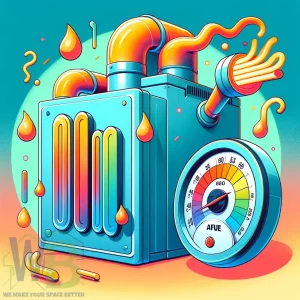Understanding how to read an R-410A P-T chart is crucial for HVAC technicians. This guide will walk you through the process step by step.
What is an R410A PT Chart?
An R-410A Pressure-Temperature (PT) chart is a tool used in HVAC systems to determine the corresponding saturation temperature of the R-410A refrigerant at different pressures.
This chart is essential for HVAC technicians as it helps in diagnosing and maintaining air conditioning systems.
The chart displays temperature values (in degrees Fahrenheit or Celsius) against pressure values (in pounds per square inch gauge, or PSIG), allowing for accurate adjustments and troubleshooting of HVAC equipment using R-410A refrigerant.
How to Read an R-410A PT Chart
1. Identify Desired Temperature
- Determine Temperature: Choose the required temperature for your system based on its application or specific needs.
2. Find Corresponding Pressure
- Locate on Chart: Find the selected temperature on the P-T chart and note the corresponding pressure in psig (pounds per square inch gauge)
3. Check Superheat and Subcooling
- Measure System Conditions: Measure temperature and pressure at the evaporator outlet (for superheat) and condenser outlet (for subcooling).
- Calculate Superheat/Subcooling: Use the P-T chart to find the saturated temperature for the measured pressure. Subtract this from the measured temperature to determine superheat or subcooling.
4. Adjust the System
- System Adjustment: Based on the P-T chart readings, adjust your system’s components, like the thermostat or pressure controls, to achieve the desired operational conditions.
R410A (PT) Pressure Temperature Chart
Click here to view R410A PT Chart – Google Sheets
Click here to download R410A PT Chart (PDF)
Conclusion
- Importance of P-T Charts: They are indispensable for proper HVAC system operation and troubleshooting. Mastery in reading these charts is essential for every HVAC professional.
Remember, accurate readings and adjustments based on the P-T chart are key to efficient HVAC system performance.







